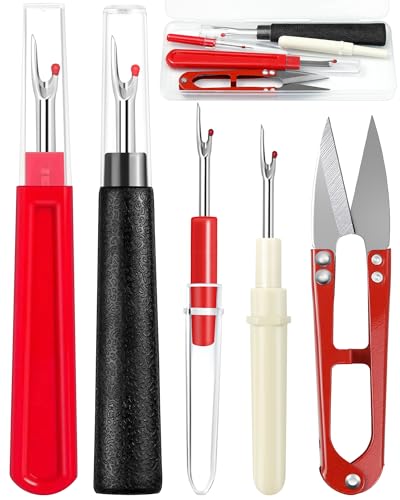There’s nothing more frustrating than sitting down to sew with your serger only to find it won’t cut. I’ve been there, and it’s enough to make anyone want to toss the machine out the window. But before you give up hope, let’s take a moment to troubleshoot this common issue together.
Common Reasons for Cutting Issues
When a serger won’t cut, specific factors can contribute to the problem. Understanding these common issues can help resolve cutting failures effectively.
Dull Blades
Dull blades significantly hinder cutting efficiency. Inspect your serger blades for nicks or wear. Blades require sharpening or replacement if they lose their sharp edge. To maintain optimal performance, sharpen them every few months or replace them after substantial use.
Incorrect Threading
Incorrect threading disrupts the serging process, leading to cutting issues. Double-check the threading path and ensure each thread follows the correct path in accordance with the manual. Misthreading can lead to improper tension, affecting the cutting mechanism.
Fabric Types
Certain fabric types pose unique challenges for cutting. Thick fabrics, such as denim or multiple layers, can cause the serger blades to struggle. Consider using a serger with a powerful motor or adjust the presser foot pressure to manage thicker materials. Additionally, slippery fabrics, like silk, may require a stabilizer for better cutting action.
How to Troubleshoot Cutting Problems
When a serger won’t cut, I can focus on resolving the issue with specific troubleshooting steps. Identifying the problem promptly helps maintain workflow and get back to sewing.
Checking the Blade Alignment
Checking blade alignment is crucial for proper cutting performance. Always ensure the upper and lower blades are parallel to each other. Misalignment may occur from wear or adjustment shifts.
- Unplug the serger to avoid accidents.
- Examine the blade position using a screwdriver if adjustments are needed.
- Adjust the blade until it’s positioned correctly and test the cutting action on scrap fabric.
Inspecting the Thread Tension
Inspecting thread tension helps identify cutting issues caused by incorrect settings. If the tension is too tight or too loose, cutting can become inefficient.
- Check the tension settings against the manufacturer’s recommendations.
- Perform a test run on scraps, adjusting tension increments by 1-2 numbers if necessary.
- Verify that the threads flow smoothly through the tension discs, ensuring there’s no snagging.
By carrying out these checks, I can effectively address cutting problems and keep my serger in top working condition.
Maintenance Tips for Your Serger
Maintaining your serger is crucial for optimal performance. Regular upkeep ensures smooth operation, especially when it comes to cutting fabric effectively.
Regular Blade Replacement
Regularly replacing blades is vital for achieving clean cuts. Depending on usage, I recommend replacing the cutting blades every 6 to 12 months. A dull blade won’t cut properly and can fray edges rather than cleanly sever them. When replacing blades, choose high-quality replacements specific to your serger model for best results.
Cleaning and Oiling
Cleaning and oiling your serger enhance its longevity and performance. I recommend cleaning the cutting area and feed dogs every few projects. Dust and lint can accumulate and affect functionality. Use a soft brush to remove debris, and a small vacuum can help clean hard-to-reach areas.
Oiling should occur according to your serger’s manual, typically every few projects. Use only the recommended sewing machine oil to keep the internal mechanisms running smoothly. A well-oiled machine reduces friction and extends the life of components, contributing to efficient cutting action.
When to Seek Professional Help
Sometimes, despite your best efforts, a serger might still refuse to cut properly. In these cases, reaching out to a professional becomes necessary to avoid further damage and ensure effective repairs.

Signs of Major Issues
In certain situations, specific signs indicate a need for professional attention. If your serger exhibits loud or unusual noises during operation, it might point to a mechanical problem. If you’ve checked the blades and threading but the cutting remains ineffective, deeper internal issues may exist. Threads frequently breaking or looping can also signify a misalignment that requires a technician’s expertise. Lastly, any presence of consistent fabric jams or skipped stitches often suggests that it’s time to seek professional help.
Finding a Reliable Technician
When searching for a reliable technician, consider asking for recommendations from fellow sewists, fabric stores, or sewing classes. Online reviews can provide additional insight into local professionals’ reputations. Look for technicians specializing in sergers, as they possess the specific knowledge required for your machine. Always inquire about their experience with your particular serger brand and model. A good technician will offer a clear estimate of repairs and a timeline for completion, so you can return to your sewing projects without delay.
Conclusion
Dealing with a serger that won’t cut can be frustrating but it doesn’t have to derail your sewing projects. With a little patience and the right approach you can troubleshoot the issue and get back to creating beautiful pieces.
Regular maintenance is key to keeping your serger in top shape. Don’t hesitate to replace those blades or seek professional help if you notice persistent problems. Remember that every challenge is just another opportunity to learn and improve your skills.
I’m rooting for you as you tackle any cutting issues that come your way. Happy serging!

















